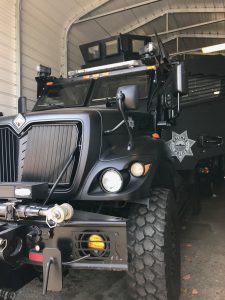![]() When I get sick, I usually like to pretend it’s not happening, try to act normal, operate at full capacity, fool the world…but my sneezing & coughing usually betray my confidence. Disease seems to be a recurring theme in SPP, metaphorically or literally – per today’s environmental conflict session, contagion & treatment-resistant diseases are considered a significant contemporary threat, right up there with terrorism & cyber war. Sanitation & public health issues are continually at the forefront of behavior change campaigns and arguably will remain there. When thinking of the characteristics of a sickness, one of the first questions that comes to mind is whether or not the carrier is contagious. Why? Because nobody wants to catch it. Being sick is no fun, can spread quite quickly, drains resources, and can be debilitating or life-threatening. Sounds a lot like violence, no?
When I get sick, I usually like to pretend it’s not happening, try to act normal, operate at full capacity, fool the world…but my sneezing & coughing usually betray my confidence. Disease seems to be a recurring theme in SPP, metaphorically or literally – per today’s environmental conflict session, contagion & treatment-resistant diseases are considered a significant contemporary threat, right up there with terrorism & cyber war. Sanitation & public health issues are continually at the forefront of behavior change campaigns and arguably will remain there. When thinking of the characteristics of a sickness, one of the first questions that comes to mind is whether or not the carrier is contagious. Why? Because nobody wants to catch it. Being sick is no fun, can spread quite quickly, drains resources, and can be debilitating or life-threatening. Sounds a lot like violence, no?
Punitive Justice vs. Restorative Justice. Revenge vs. Reconciliation. Harm vs. Healing. We’ve learned an extraordinary amount in these weeks, but I won’t pretend to be an expert in conflict resolution…however, I do agree that violence mimics disease in a remarkable way. It gets into the very pores of your existence, it can spread quickly, it can be debilitating like a plague, sometimes it’s out of your control, it’s contagious, an epidemic, and preys on the weak. But there is hope, and a cure is not impossible. To end violence seems daunting; when it comes to gang violence, however, there are some promising remedies worth sharing. Programs like Ceasefire and Cure Violence utilize intervention tactics, accountability, and moral authority to positively change behavior. Ceasefire uses call-ins, meetings with gang members, religious leaders, police, and community members in attendance to enforce group accountability for the actions of one. Cure Violence cleverly uses “interrupters” (intermediaries), usually former gang members, who have a higher moral authority – meaning, they are a part of the community and have the prior experience in their lives to better develop trust with the intended audience. If a young boy is at risk of joining a gang…to whom is he more likely to listen if he is to be discouraged from doing so…a policeman, or someone from his community with whom he can identify, someone who has been in his shoes? The concept of moral authority is a powerful one, and I think we seek it out more than we realize…I always trust someone more who has “been there” – because experience gives credibility. 
Diseases infiltrate individuals, populations, and spaces, without permission. Space can be perceived, space can be surrounded by a border, space can be a neutral zone, or space can be a physical location. Walls can be used to keep people inside a zone, or to keep them from entering. An airborne disease permeates borders, it laughs in the face of a wall. Just like violence. Space can also act as a facilitator…how? An everyday space can be a great place to pursue reconciliation. Violence can’t very well be tranquilized if the gathering is taking place on disputed territory or a place of historical marginalization. There is healing power in acknowledgement – once issues are identified and pure honesty prevails, the mending has a better shot at survival.
So what is the moral of the story? Contagion is scary, and so is violence. If we treat violence like a disease, we also must remember that it does not excuse violent behavior or label a culpable individual free from accountability…but it certainly helps explain the actions of individuals who have walked down the path of violence. In order to treat a disease, we must understand its behavior. The studies of behavior and attitude are far from simple, nor are they short term goals; however, it is fundamental to understand their genetic makeup if we are to successfully develop the antidote to cure violence.

